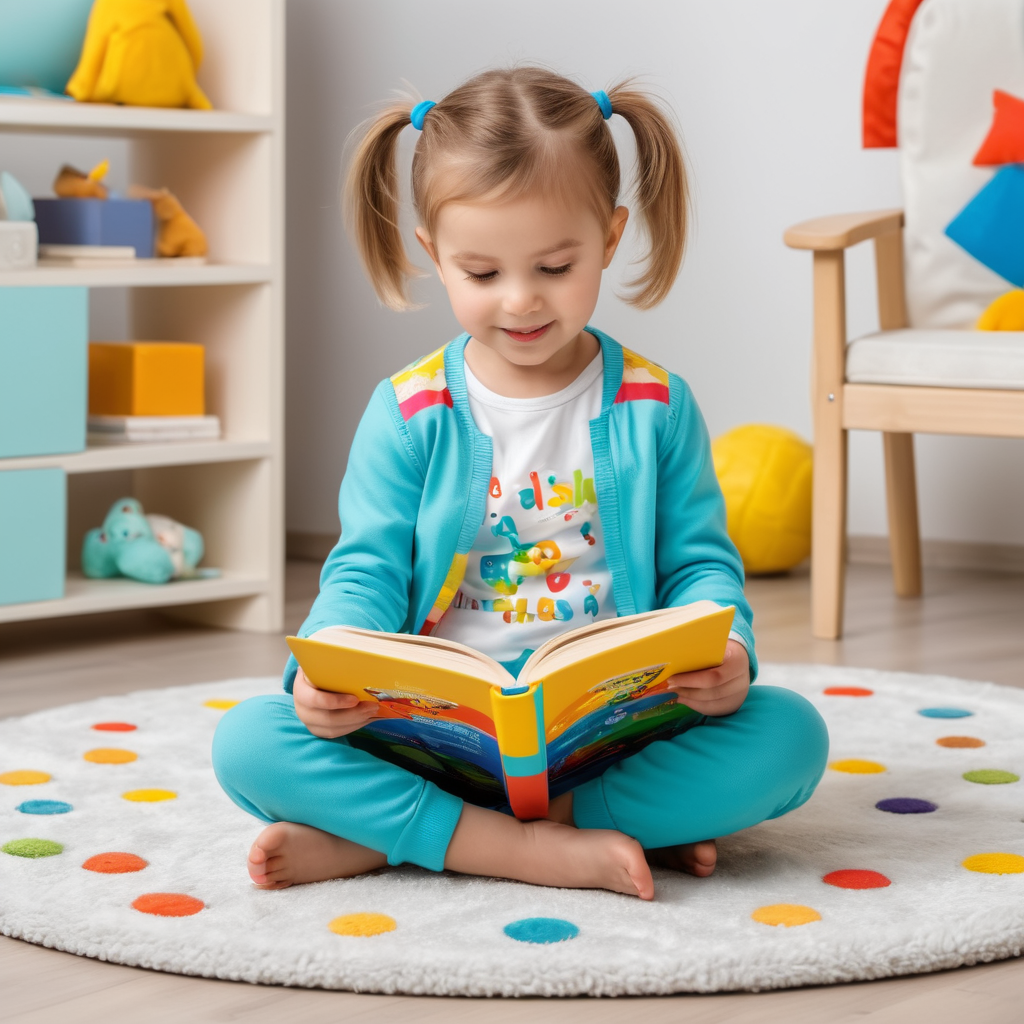Establishing a regular reading routine for your child is one of the most effective ways to build strong literacy skills and a lifelong love of learning. However, keeping your child consistently engaged in reading can be challenging, especially with the many distractions children face today. This article will offer practical strategies to help parents keep their children motivated and excited about their reading routine while fostering an environment that encourages consistent learning.
Why a Regular Reading Routine is Important
Before diving into how to keep your child engaged, it’s essential to understand why a regular reading routine is so beneficial:
- Improves Reading Skills: Consistent reading helps children improve their vocabulary, comprehension, and fluency. It allows them to practice daily, leading to better reading abilities.
- Boosts Cognitive Development: Reading enhances a child’s cognitive abilities, such as problem-solving, critical thinking, and creativity.
- Encourages Focus and Discipline: Developing a reading habit teaches children discipline and helps them improve their focus, which is critical in both academic and personal growth.
- Fosters a Love for Learning: When reading becomes part of a child’s daily routine, they are more likely to develop a lifelong love for books and learning.
Now that we’ve established why it’s essential to keep a regular reading routine, let’s explore ways to maintain your child’s engagement.
1. Make Reading Fun
One of the most effective ways to keep your child engaged in their reading routine is by making the process enjoyable. If reading feels like a chore, they’re less likely to stick with it. Here’s how to add fun to the routine:
- Choose Books They Love: Let your child pick books based on their interests. Whether they enjoy adventure, mysteries, or comics, giving them the freedom to choose their reading material will increase their enthusiasm.
- Add Interactive Elements: Turn reading into an interactive experience by asking your child to act out their favorite scenes or draw pictures inspired by the story. This encourages creativity and keeps them engaged.
- Incorporate Audiobooks: If your child gets tired of traditional reading, audiobooks are an excellent way to mix things up. Listening to stories can make the experience more immersive and captivating, while still promoting comprehension and vocabulary development.
2. Set a Consistent Reading Schedule
Establishing a specific time for reading each day helps your child understand that reading is a priority. Consistency is key in building long-term habits, and having a set time each day will help your child form a reading routine that becomes second nature.
- Find the Best Time: Choose a time that works well with your family’s schedule. Some children prefer reading right before bed, while others may be more alert after school.
- Start Small: If your child isn’t used to regular reading, start with 10-15 minutes a day and gradually increase the time as they become more comfortable with the routine.
- Create a Reading Calendar: Track your child’s reading progress by marking off each day they read on a calendar. Reward them when they hit milestones like completing a week or month of consistent reading.
3. Create a Cozy Reading Environment
Children are more likely to enjoy reading if they have a comfortable, dedicated space for it. Transform a corner of your home into a cozy reading nook that your child associates with books.
- Comfy Seating: Make sure the reading area includes comfy chairs, pillows, or bean bags where your child can settle in with a book.
- Good Lighting: Proper lighting is essential for creating a welcoming reading environment. Ensure there’s enough natural or soft light to make reading easy on the eyes.
- Organize Books: Display a variety of books within easy reach. Use colorful shelves or baskets to store their favorite stories, making it easy for them to select what they want to read.
Read Also
Why Consistency is Key to Literacy Success?
4. Use Rewards and Incentives
Using rewards can motivate your child to stay on track with their reading routine. The key is to use positive reinforcement to create excitement around reading, without making it feel like a requirement they must meet for a reward.
- Reading Charts: Create a reading chart where your child can earn stickers or checkmarks for each day they read. After reaching a specific number of days, reward them with something special, such as a new book, a small toy, or a fun outing.
- Book Club Challenges: Turn reading into a friendly competition by creating a family or friend book club. Everyone reads the same book or sets personal reading goals, and then meets to discuss or celebrate accomplishments together.
- Small Rewards for Big Efforts: Offer small rewards for achieving reading goals, like finishing a certain number of pages or reading for a week without missing a day. This could be something as simple as extra playtime, screen time, or a special treat.
5. Get Involved with Shared Reading
Shared reading is a powerful tool to keep your child engaged with their reading routine. When parents read together with their children, it strengthens the bond between them and makes reading a more enjoyable, shared experience.
- Read Aloud Together: Take turns reading aloud with your child. This is especially helpful for younger readers who may need extra support with new or challenging words. It also allows for discussions about the story, enhancing comprehension.
- Ask Questions: Engage your child in the story by asking open-ended questions about what they think will happen next or how they feel about the characters. This encourages critical thinking and keeps them interested in the storyline.
- Discuss Books: After reading, take a few minutes to talk about the story. Ask what they liked or disliked and discuss any lessons or themes that were present. These conversations help deepen their understanding and appreciation for the books.
6. Rotate Reading Material Regularly
Sometimes children get bored with the same books over and over again. To keep them excited about their reading routine, regularly rotate the types of reading materials you offer. Introducing new genres, authors, and book formats can refresh their interest and keep reading engaging.
- Visit the Library: Make library trips a regular part of your routine. Let your child explore new books, and encourage them to choose ones that pique their curiosity.
- Explore Different Formats: Switch between physical books, eBooks, and audiobooks to keep things fresh. You can also introduce graphic novels, magazines, and poetry to provide variety.
- Read Across Genres: Introduce your child to different genres like fantasy, historical fiction, science fiction, and non-fiction. This variety keeps reading exciting and exposes them to diverse writing styles and ideas.
7. Model Good Reading Habits
Children are more likely to develop strong reading habits if they see their parents or caregivers engaged in reading. Set an example by reading regularly yourself and talking about the books you’re reading. When your child sees that reading is a priority for you, they’ll be more inclined to follow suit.
- Set Aside Family Reading Time: Create a time where the whole family reads together. This could be a quiet evening activity where everyone sits down with their own book.
- Discuss Your Reading: Share what you’re reading with your child. Let them know what excites you about your current book, and ask them to do the same. These conversations help foster a reading culture in your home.
Conclusion: Stay Consistent and Positive
Establishing a regular reading routine is essential for fostering literacy and academic success. By making reading fun, setting a consistent schedule, creating a comfortable reading space, and engaging with your child during reading time, you can ensure that they stay excited and motivated to read.
If you’re looking for additional support to help your child develop strong reading habits, consider programs like Reading Head Start, created by Sarah Shepard. This program provides a structured, effective approach to teaching reading and offers valuable resources that help parents guide their children toward literacy success.


